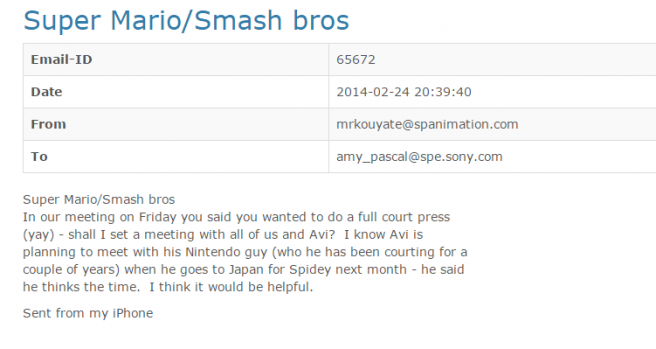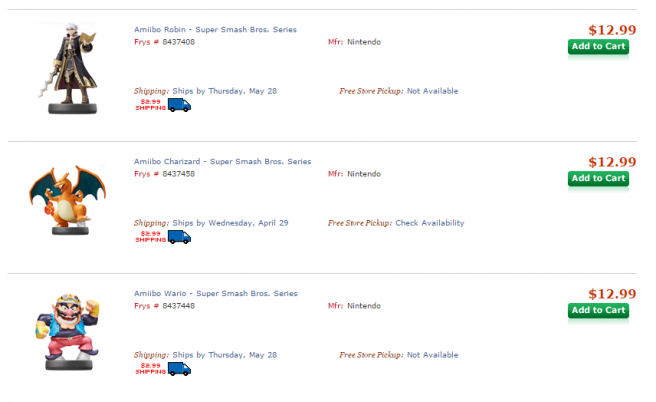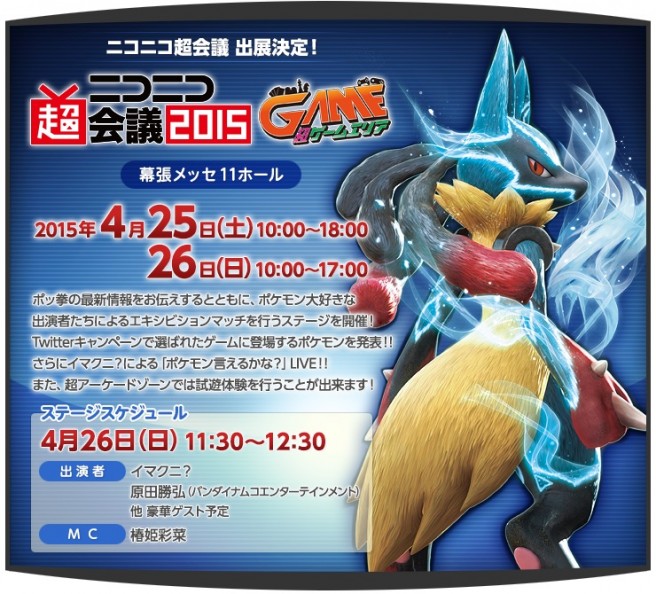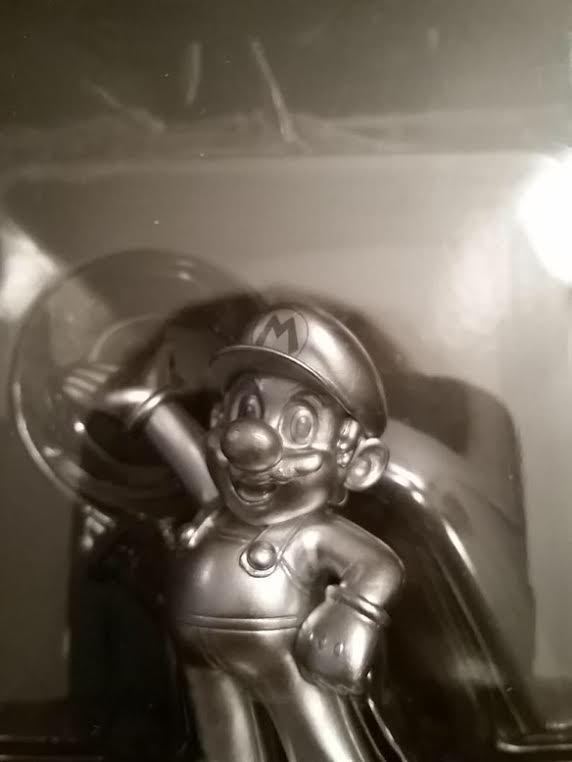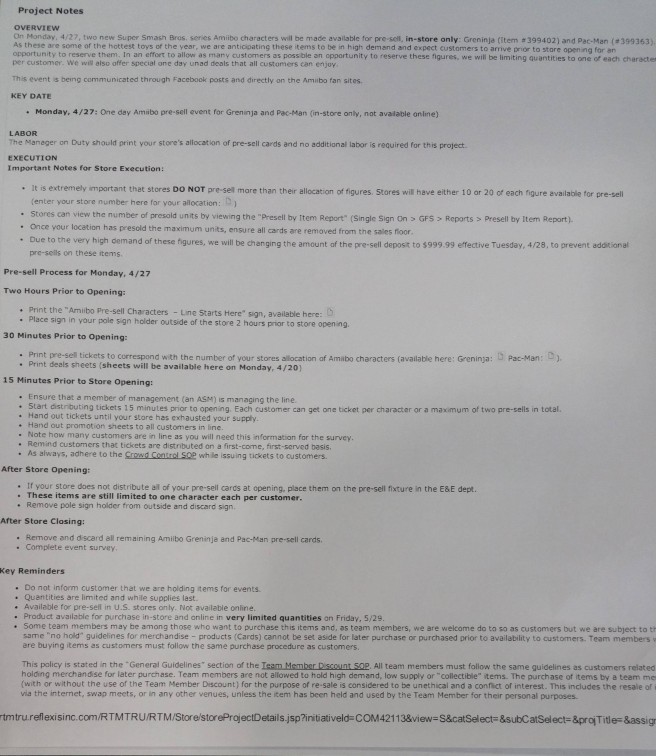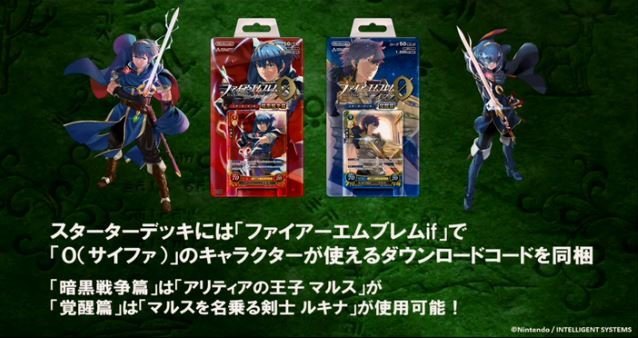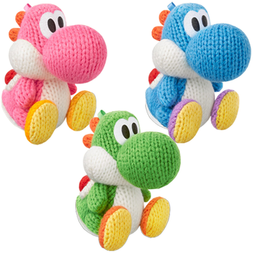Update: More emails – Sony was pursuing a Smash Bros. movie
Posted on 10 years ago by Brian(@NE_Brian) in General Nintendo, News | 35 Comments
Update 2: Bumped to the top. Another email has been found. Arad said in one message that Keiko Erikawa, one of the founders of Koei Tecmo, was “instrumental to the Mario deal” – likely because of her relationship with Nintendo.
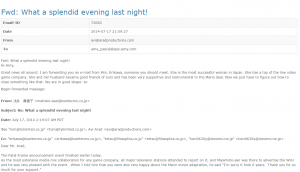
Update: We’ve posted a couple of other email exchanges below. It sounds like Sony was interested in Nintendo’s full stable of IPs!
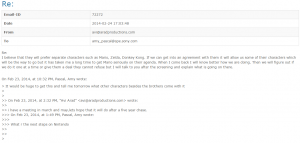
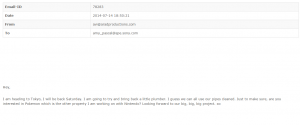
You may remember that, last year, there was talk about Sony securing the rights to a Mario movie. That news came about due to a leak within Sony – specifically emails between top executives within the company and producer Avi Arad.
As it turns out, Sony wasn’t just interested in Mario. WikiLeaks has now obtained emails which reveal that the company was very much interested in creating a Smash Bros. movie as well. It seems that Arad would have been involved with this film, too.
Just like the Mario movie, specific details are not available at this time. There’s a good chance that both projects will never happen!
More: Sony, Super Smash Bros., top
Update: Gone – Fry’s taking pre-orders for Robin, Charizard, Wario, Splatoon amiibo
Posted on 10 years ago by Brian(@NE_Brian) in General Nintendo, News | 4 Comments
Update: All gone.
Fry’s has now opened pre-orders for the Robin, Charizard, Wario, and Splatoon amiibo. Get yours here. I’m sure this won’t last too long!
Club Nintendo Japan gets dot Mario tissue box cover this month
Posted on 10 years ago by Brian(@NE_Brian) in General Nintendo, News | 0 comments
Yet another new reward is coming to Club Nintendo Japan later this month. On April 27, members can order a dot Mario tissue box cover. This will be available for 350 points.
More: Club Nintendo, Japan
Nintendo UK store now taking pre-orders for the Greninja and Jigglypuff amiibo
Posted on 10 years ago by Brian(@NE_Brian) in General Nintendo, News | 3 Comments
Pre-orders for the Greninja and Jigglypuff amiibo are now live on the Nintendo UK store. You can reserve both figures here. Pricing is set at £10.99 each.
Pokken Tournament – 2 more location tests, new information at NicoNico Chokaigi
Posted on 10 years ago by Brian(@NE_Brian) in General Nintendo, News | 4 Comments
Bandai Namco has two more location tests lined up for Pokken Tournament. Fans can give the game a try in Osaka and Chiba prefectures on April 18 and April 19 in Japan.
That’s not all on Pokken Tournament. Bandai Namco will be sharing new information during a NicoNico Chokaigi stage show, which will take place on April 26 at 11:30 AM Japan time (or 10:30 PM ET / 7:30 PM PT the previous day). We’ll be seeing one or more new characters, including ones that were in the recent poll on Twitter.
Nyannyan Neko Mario Time episode 35
Posted on 10 years ago by Brian(@NE_Brian) in General Nintendo, Videos | 0 comments
More: Japan, Nyannyan Neko Mario Time
Silver Mario amiibo out in the wild
Posted on 10 years ago by Brian(@NE_Brian) in General Nintendo, News | 3 Comments
The gold Mario amiibo was distributed by Walmart last month, but we’re still waiting on an official announcement (and launch) of the silver variant. It’s particularly strange then that one fan has already managed to get his hands on a silver Mario.
“matteomax” recently won a Chinese auction for the figure, and although it’s unclear how the seller originally obtained it, everything seems to be legitimate. As shown below, the amiibo came pre-loaded with a silver token for use in Mario Party 10.
More: Amiibo
Toys “R” Us in-store pre-orders for Greninja and Pac-Man amiibo – 1 per customer, 10-20 per store
Posted on 10 years ago by Brian(@NE_Brian) in General Nintendo, News | 5 Comments
An internal document from Toys “R” Us reveals additional details about upcoming in-store pre-orders for the Greninja and Pac-Man amiibo.
Customers will be limited to reserving one of each figure. Moreover, there will be 10-20 units of the Greninja and Pac-Man amiibo per store.
You can find additional information about how stores will be handling the pre-orders above. Reservations will take place on April 27.
Fire Emblem card game starter decks to come with Fire Emblem If DLC codes for Marth and Lucina
Posted on 10 years ago by Brian(@NE_Brian) in 3DS, General Nintendo, News | 3 Comments
New details have emerged about the Fire Emblem If card game, known as TCG Fire Emblem 0 (Cipher).
A photo from Japanese website Inside Games provides a look at the “Dark War Volume”. This has a download code for “The Prince of Altea, Marth” while the “Awakening Volume” starter deck contains a code for “The Swordsman Who Goes By Marth, Lucina”. Additionally, the booster box features a preview card of the next series of cards and a code to get “Pegasus Knight Minerva” in Fire Emblem If.
There are also plans to release “White Kingdom” and “Black Kingdom” card series based on Fire Emblem If. Other than that, a third series known as “Trace of Blue Flames” is due out at some point.
Fire Emblem fans in Japan can purchase the first series of cards on June 25 – the same day Fire Emblem If launches. Pricing for the starter deck is set at 1,300 yen, and booster packs cost 350 yen.
More: Fire Emblem If, Japan, top
Yoshi’s Woolly World yarn amiibo pre-orders live in the UK
Posted on 10 years ago by Brian(@NE_Brian) in General Nintendo, News | 2 Comments
Retailers in the UK are now starting to take pre-orders for the upcoming yarn-based Yoshi amiibo. ShopTo has the different plushies for £16.85 each, and Yoshi’s Woolly World for £34.85. You can also pre-order from GAME – see pricing below.
Yoshi’s Woolly World games alone – £34.99
Individual Yoshi amiibo – £19.99
Game + green Yoshi amiibo – £49.99
Yoshi amiibo triple pack – £49.99
Game + all three Yoshi amiibo – £79.99
The new Yoshi amiibo will be compatible with Yoshi’s Woolly World, which launches in Europe on June 26. Players can place the plushie on the Wii U GamePad while playing alone to gain access to a second Yoshi character.
